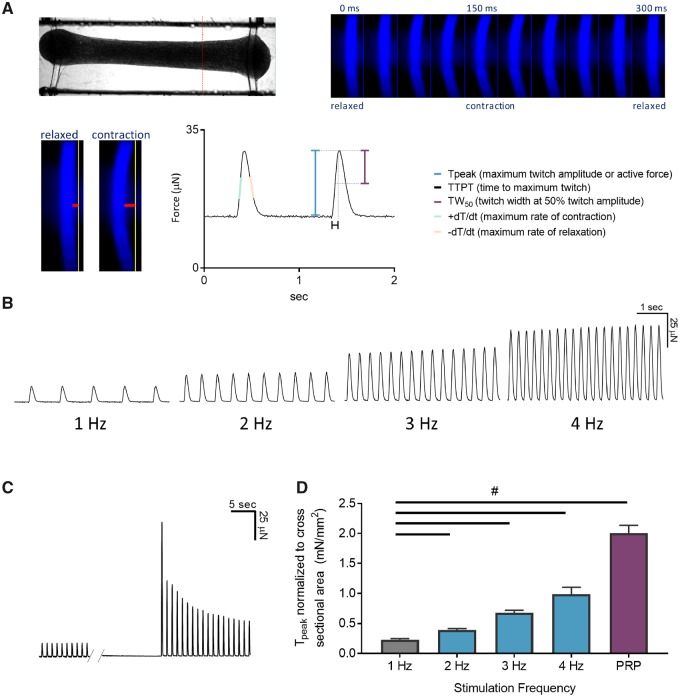Figure 1.
Engineered cardiac tissues (ECTs) generated in the Biowire II platform have adult-like contractile properties. A, A representative image of an ECT suspended in the Biowire II platform (top left). Twitch force is measured by acquiring a video of the contracting tissues under field stimulation and converting the pixel displacement of the poly(octamethylene maleate (anhydride) citrate) (POMaC) wire (bottom left, red horizontal bars) into a force measurement (Zhao et al., 2019). A time lapse of the POMaC displacement is shown on the top right panel. Once pixel movements are converted to force, parameters of contractility including maximal twitch amplitude or active force (Tpeak), time constants and rates of contraction and relaxation are derived (bottom right). B, ECTs stimulated in the Biowire II platform showed positive force-frequency relationship and (C) prominent postrest potentiation after 6 weeks of electrical stimulation. D, Summary of force-frequency relationship and postrest potentiation normalized to ECT cross-sectional area. (n = 6) ECTs. Data presented as mean ± SEM. #p < .05 using one-way ANOVA.

